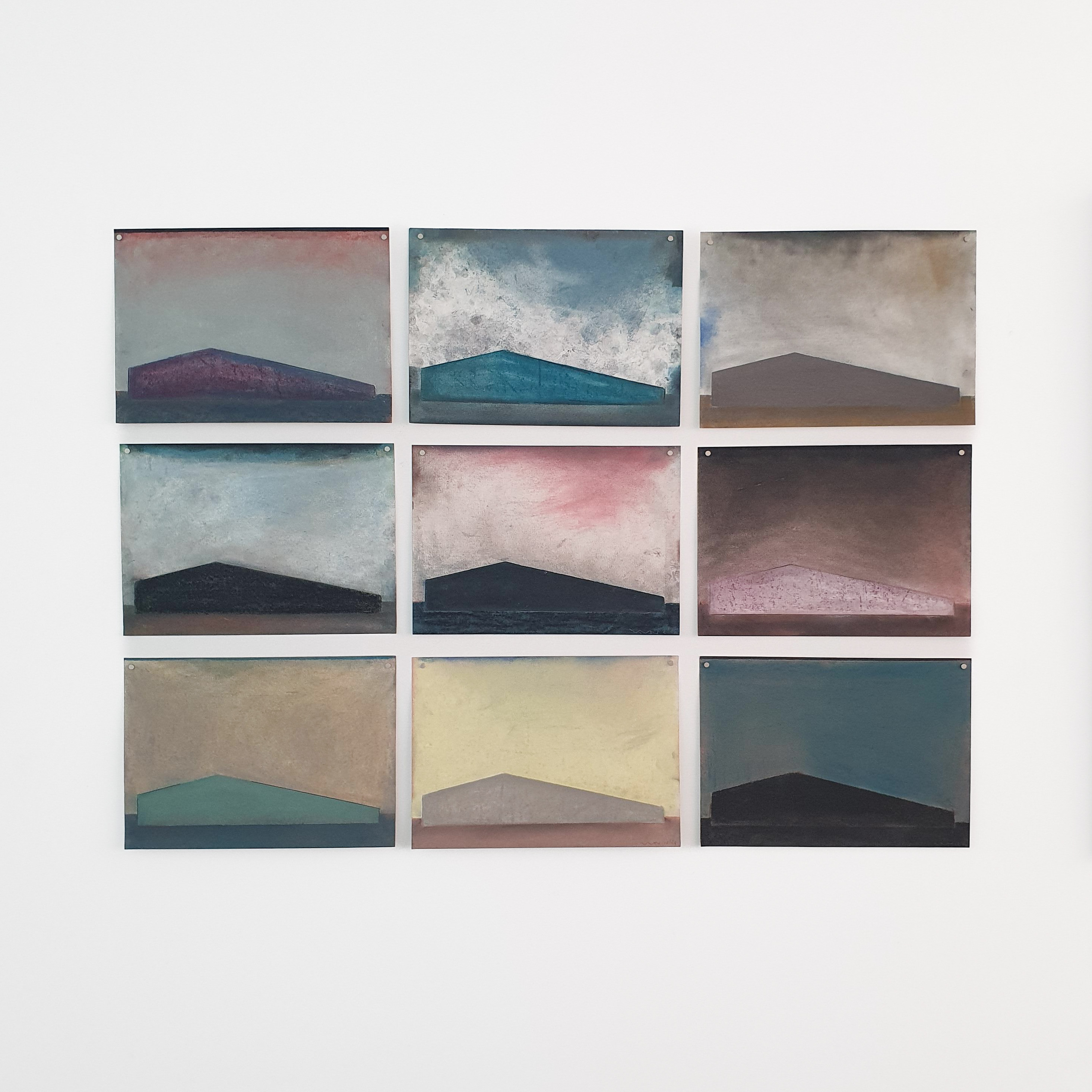30 june 2025, Flor Linckens
Willibrord Nota: what repetition can teach us about the act of looking
In the exhibition 'La basse vallée du Geer' at Marieke Severens Gallery in Maastricht, Willibrord Nota presents a new series of pastel drawings on paper. The works emerged during his many bike rides along the Jeker valley towards the Walloon city of Tongeren, a route he has followed for years since moving to Maastricht. It is particularly the stretch beyond the bridge at Kanne, where the Jeker turns into the Geer, that continues to captivate him.
Nota: “I’ve always felt absorbed by the landscape, as though I were travelling back in time. I don’t experience this so much in the short and beautiful Dutch section of the Jeker, but especially once you cross the bridge at Kanne and enter Wallonia, where the river becomes the Geer. There, time seems to have stood still. But if you look closely, everything is all mixed together. Beautiful landscapes, a large oil tank next to a house, a lovely old Romanesque church, a hodgepodge of houses along a single street, a field of poplars, an enormous dilapidated barn, a flashy modern villa, a neglected carré farmhouse… It’s precisely this contrast between beauty and ugliness that makes the valley so compelling.”
The resulting works are not literal representations of the landscape, but rather slow, contemplative explorations of what the valley means to Nota. Time and again, the same silhouette of a barn appears, serving as an anchor in an ever-shifting environment. By revisiting this motif repeatedly, a rhythm emerges that borders on meditation. The structures and semi-abstract colour fields suggest the reflection of light, the slow passage of time and subtle shifts in season and mood, each time he passes through the valley.
At times, the building glows in light blue or soft pink; at others, it seems to dissolve into shadow or stand out starkly against a threatening sky. Repetition, colour and nuance take centre stage here. Nota often works in series, revisiting a single shape or theme in new ways. In his body of work, he shows how the act of looking itself can create meaning. These images hold a quiet melancholy, but also a calm acceptance of imperfection and transience. They invite us to look slowly, to discover nuance in repetition.
For this ongoing series, Nota works with pastel on paper, a medium well suited to layering and softness. The grainy texture of the chalk enhances the poetic quality of the work. In other series, he also experiments with monoprints, drawings, paintings and collages, using materials such as pigment, graphite, oil paint and metal. His own photographs often serve as a starting point. Nota’s visual language is shaped by influences from the early Renaissance, Dutch seventeenth-century painting and pop art.
The compositional structure of the valley series appears simple: sky, ground and building. But within that framework, endless variation becomes possible. One senses how carefully each work is composed, with an attention to detail one might expect from someone who designed textiles for companies such as De Ploeg and Desso. His background as a historian and teacher also resonates throughout: for Nota, the act of looking is never passive. His work shifts from documenting to understanding. He shows how a single building, seen in different conditions, can become a vessel for memory, atmosphere and time.
Nota’s work is part of the collection of the Textielmuseum and the corporate collection of Defauwes, curated by Jac and Miny Defauwes. A selection from that collection, including one of Nota’s pieces, will be on view at Museum Valkenburg through 10 August.



